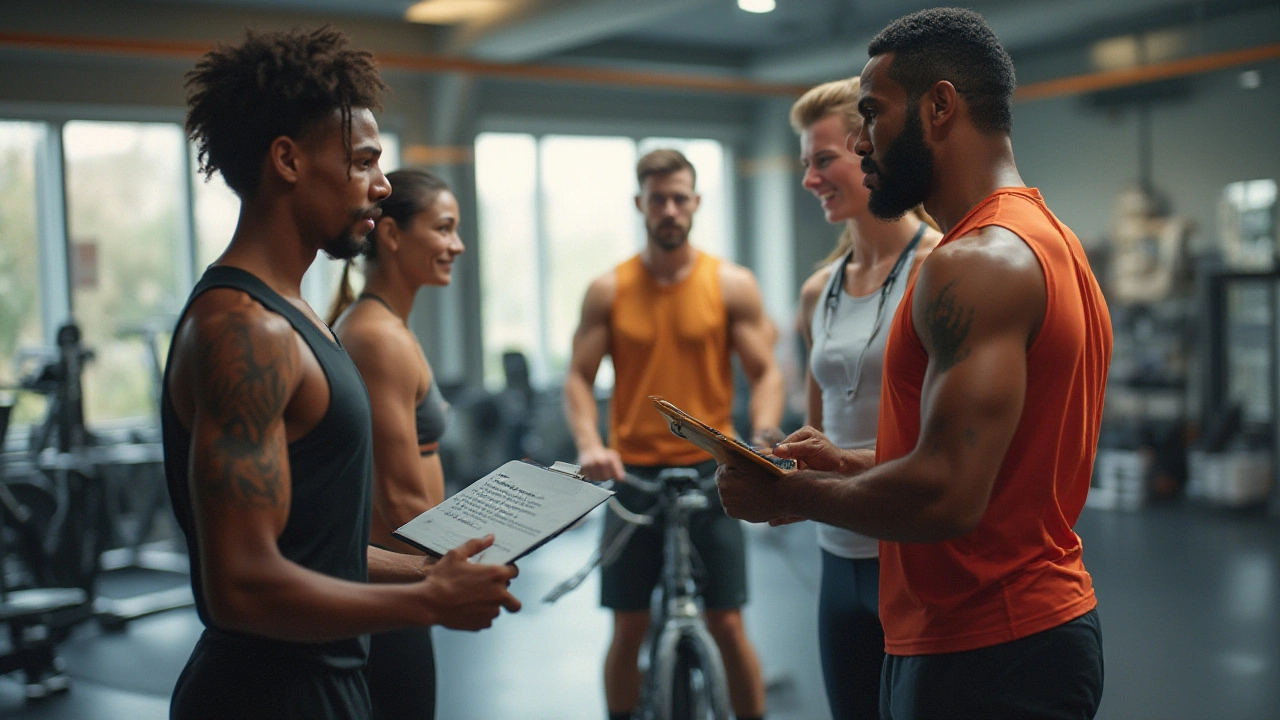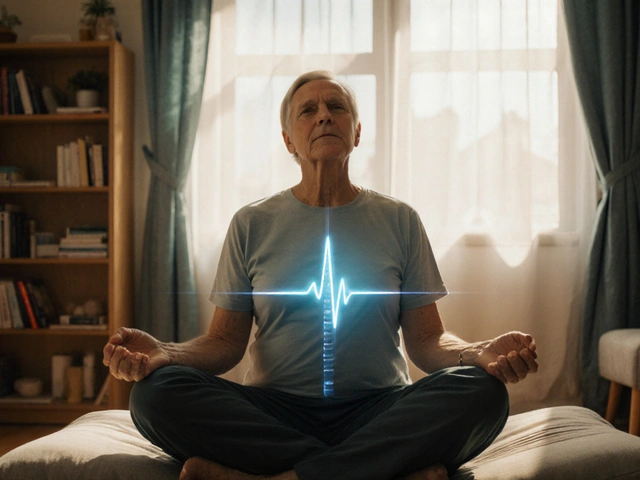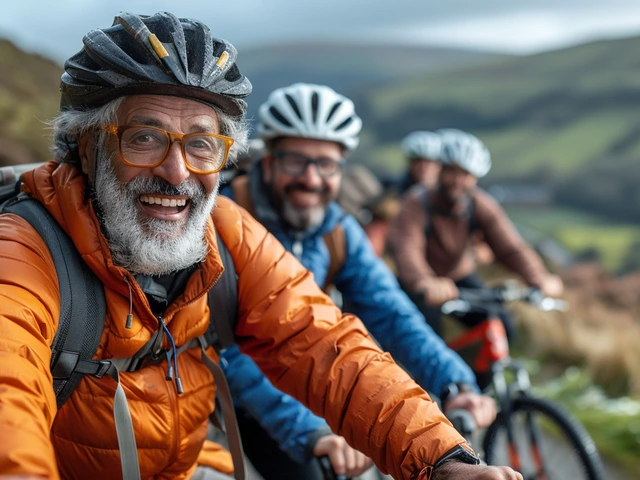Ever wondered why pro athletes seem to bounce back so quickly after grueling matches or intense training days? There's a not-so-secret weapon they all rely on—sports massage. It’s not just some fancy add-on for luxury spas or swanky gyms. People like you and me can get huge benefits, whether we run trails on weekends or grind it out at CrossFit classes three times a week. Sports massage isn’t just about relaxing muscles; it can actually elevate your entire fitness game in ways you might not expect.
The Science and Magic Behind Sports Massage
When you hear “sports massage,” you might picture someone kneading away knots in a candle-lit room. But there's a lot more going on under the surface. Sports massage uses targeted pressure, stretching, and movement techniques to work deep into muscles and connective tissue. The goal? To reduce tension, increase flexibility, boost circulation, and speed up recovery.
When your muscles work hard—like during an intense HIIT session or those killer cycling classes—they develop tiny micro-tears and inflammation. That’s a normal part of building strength, but it's also what makes you sore after pushing your limits. Sports massage encourages your body to deliver more oxygen-rich blood to tired muscles, which helps them repair faster. It literally helps you recover so you can get back to the gym or track with less time stuck on the couch complaining.
According to a study in the Journal of Athletic Training, athletes who received sports massage after a workout experienced less muscle soreness and faster recovery compared to those who didn’t. That means whether you're training for your first 10K or prepping for that beach volleyball tournament, you could bounce back faster with a targeted massage session in your routine.
The best part is, you don’t need to be a pro to benefit. Sports massage helps with everything from annoying lower back pain after a long run to that stiff neck you get from too much time at your laptop. The techniques focus on your individual trouble spots or problem areas, making it super versatile.
Still not sure how sports massage stacks up against regular massages? Here’s a quick breakdown:
| Regular Massage | Sports Massage |
|---|---|
| Focuses on relaxation and general tension relief | Targets specific muscle groups used in your sport or exercise |
| Typically uses gentle, full-body strokes | Involves deeper, more intense pressure and stretching |
| Not always tailored to athletic performance | Designed to prevent injuries, enhance recovery, and improve mobility |
So if your main goal is to keep smashing your fitness targets—not just to feel fancy for an hour—sports massage is the tool you probably didn’t know you needed.

Top Benefits That Make Sports Massage a Game-Changer
If you’ve ever finished a workout feeling like a superhero but woke up the next day barely able to walk down the stairs, you’re not alone. That post-exercise soreness (delayed onset muscle soreness or DOMS) happens because your body is busy making repairs. Sports massage helps you shake off that “I’m walking like a penguin” phase way faster.
Here are some of the most powerful benefits you’ll get if you make sports massage part of your regular routine:
- Muscle Recovery: It speeds up the healing process. As blood flow increases and metabolic waste is flushed out, your body gets what it needs to repair tissue damage and get stronger.
- Injury Prevention: Regular sessions help spot tight spots or imbalances before they turn into full-blown injuries. You can fix small issues before they sideline your workout plans.
- Flexibility: Massage stretches tissues and targets tough areas that regular stretching misses, which means better range of motion and fewer pulled muscles.
- Pain Relief: Struggling with shin splints, IT band pain, or stubborn knots in your shoulders? Sports massage provides immediate relief and can even stop little aches from turning chronic.
- Mental Boost: Let’s not forget the headspace benefit. Sports massage lowers stress hormones and boosts feel-good brain chemicals like serotonin, helping you sleep better and stay motivated.
A fun fact: research published in the International Journal of Sports Physical Therapy found that even a single 30-minute sports massage session post-workout can reduce muscle soreness by over 30%. That’s like shaving a third off those painful recovery days!
Beyond just feeling better, sports massage can actually make you perform better too. When your muscles aren’t bogged down by tension or scar tissue, every movement feels easier and more powerful. You might even notice your speed and endurance quietly creeping up session by session. Lauren, my spouse, noticed a huge difference during a half-marathon training cycle—her times improved, she had fewer nagging pains, and she didn’t panic about missing a workout due to random calf cramps.
Another angle people don’t talk about much? Body awareness. Sports massage helps you tune in to your own patterns. You’ll catch yourself thinking, “Whoa, my right hip is always tighter,” or “My quads are screaming after leg day.” This insight helps you train smarter, adjust your routine, and nip bad habits in the bud long before they cause bigger problems.
Let’s not ignore the cold, hard numbers either. Soft tissue injuries account for up to 70% of all sports and exercise injuries. Regular massage can reduce your risk by at least 25%, according to data from the American Massage Therapy Association. So if you’re putting in the effort to stay healthy and fit, it just makes sense to protect your investment.

How to Make Sports Massage Work for Your Fitness Routine
So, how do you actually start getting these benefits? You don’t need to book a weekly appointment or drop a fortune at a spa. Start by figuring out where you feel the most tension or soreness in your body after workouts. Is it your hamstrings after sprints? Your shoulders after heavy presses? Nail down your trouble areas to help your massage therapist focus where it counts.
A good frequency for most active people is once every two weeks. If you’re ramping up for a competition or a big challenge, like a marathon, increase it to weekly sessions for peak performance and speedy recovery. Remember, quality matters way more than quantity. A 45-minute targeted session can do more for your body than a generic 90-minute rubdown.
- Make sure your massage therapist has experience with athletes or active people, not just “relaxation” massage.
- Communicate! Tell your therapist exactly where you feel sore or what movements are stiffest. Honest feedback will get you better results.
- Drink extra water after each session to flush out lactic acid and toxins that massage releases.
- Plan your massage 1–2 days after your hardest workout, not right before a big event—your muscles need time to repair and adjust.
Even if professional massages aren’t in your budget every month, you’ve got other tools. Foam rollers, massage sticks, and even those sweet percussive massage guns (if you don’t mind a bit of noise) are lifesavers between sessions. Create your own little ritual—ten minutes of focused self-massage before bed or post-workout can go a long way.
Tech has jumped in, too. There are smart massage devices with built-in pressure sensors, customizable heat, and routines that target everything from plantar fasciitis to upper back stiffness. You’ve got options, so experiment to see what makes your body happiest.
Want to take your self-care up another notch? Pair your massage with other recovery strategies. Contrast baths (hot then cold water), gentle yoga, or a chill-out session on an acupressure mat all help boost blood flow and relax your nervous system. Some folks even add magnesium cream or CBD balm for an even deeper sense of muscle relief.
Sports massage might sound intimidating at first, but it’s just as essential as a good pair of sneakers or a trusty water bottle. Once you start seeing those faster recovery times, easier workouts, and fewer injury days, it could easily become your secret weapon. Treat your body well, and you'll be amazed at what it lets you achieve.






